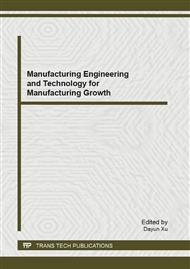p.292
p.298
p.304
p.310
p.317
p.324
p.330
p.337
p.343
Active Vibration Control of a CMOS-MEMS Nano-Newton Capacitive Force Sensor for Bio Application Using PZT
Abstract:
This paper reports the design of an optimal controller to prevent suppressvertical vibration due to undesired out of plane excitations generated by environment or gripper during manipulation for a CMOS-MEMS Nano-Newton capacitive force sensor applied for biomedical applications. Undesired out of plane excitations generated by environment or gripper during manipulation is the most prevalent source of vertical vibration in this type of sensors. To suppress the vibrational movement a PZT 5A is used as actuation mechanism. Discrete element method DEM model and Modal analysis were used to find dominant natural frequencies and mode shape vectors. To eliminate out of plane excitation an optimal linear quadratic regulator is proposed using By State-Space formulation. Simulation results illustrate that by employing optimum LQR control approach the maximum disturbance input is suppressed less than 0.7 sec with acceptable range of control voltage amplitude.
Info:
Periodical:
Pages:
317-323
Citation:
Online since:
December 2012
Keywords:
Price:
Сopyright:
© 2013 Trans Tech Publications Ltd. All Rights Reserved
Share:
Citation:


